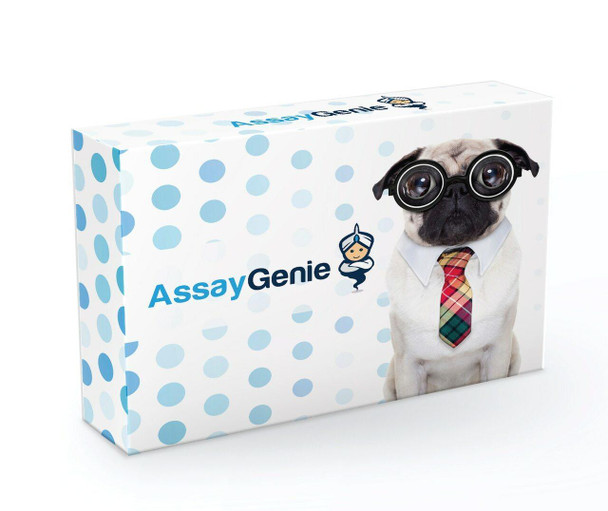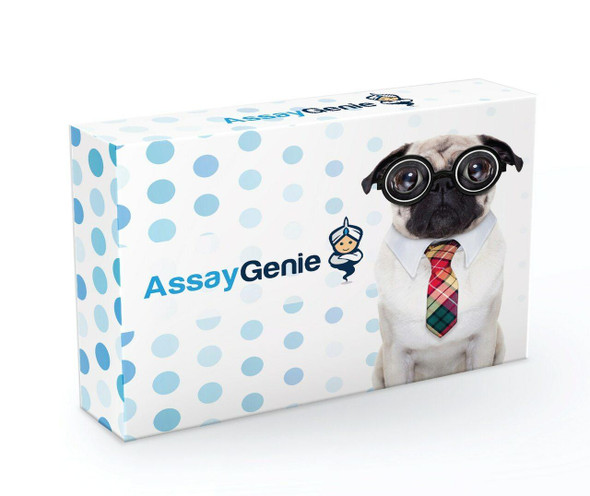YWHAE Monoclonal Antibody [PAT4F8AT] (CPAB0138)
- SKU:
- CPAB0138
- Product Type:
- Antibody
- Antibody Type:
- Monoclonal Antibody
- Reactivity:
- Human
- Host Species:
- Mouse
- Isotype:
- IgG2b
- Clone:
- PAT4F8AT
- Applications:
- WB
- ELISA
- FC
Description
YWHAE Monoclonal Antibody [PAT4F8AT] (CPAB0138)
The YWHAE Polyclonal Antibody (CPAB0138) is a powerful tool for researchers studying the YWHAE protein, which plays a key role in various cellular processes including cell signaling, proliferation, and differentiation. This antibody, produced in rabbits, shows high specificity and sensitivity towards human samples, making it a reliable choice for Western blot applications.YWHAE, also known as 14-3-3 epsilon, is a member of the 14-3-3 protein family that regulates diverse biological processes by binding to specific phosphorylated target proteins. Its involvement in cell cycle control, apoptosis, and signal transduction pathways makes it a valuable target for research in cancer, neurodegenerative diseases, and other disorders.
By using the YWHAE Polyclonal Antibody, researchers can explore the functions and interactions of the YWHAE protein in different cell types and disease contexts, providing valuable insights into its potential as a therapeutic target. This antibody is a valuable tool for advancing our understanding of cell biology and developing new treatment strategies for various diseases.
| Product Name: | YWHAE Antibody |
| Product Sku: | CPAB0138 |
| Size: | 5μg |
| Host Species: | Mouse |
| Immunogen: | Anti-human YWHAE mAb is derived from hybridization of mouse FO myeloma cells with spleen cells from BALB/c mice immunized with recombinant human YWHAE amino acids 1-255 purified from Ecoli. |
| Clone: | PAT4F8AT. |
| Reactivity: | Human |
| Applications: | Western Blot, ELISA, Flow Cytometry |
| Purification Method: | YWHAE antibody was purified from mouse ascitic fluids by protein-A affinity chromatography. |
| Isotype: | IgG2b |
| Background: | The 14-3-3 family of proteins plays a key regulatory role in signal transduction, checkpoint control, apoptotic and nutrient-sensing pathways. 14-3-3 proteins are highly conserved and ubiquitously expressed. There are at least seven isoforms, β, γ ε, σ, ζ, τ, and η that have been identified in mammals. The 14-3-3 epsilon, a subtype of the 14-3-3 family of proteins, was thought to be brain and neuron-specific. It has been shown to interact with CDC25 phosphatases, RAF1 and IRS1 proteins, suggesting its role in diverse biochemical activities related to signal transduction, such as cell division and regulation of insulin sensitivity. It has also been implicated in the pathogenesis of small cell lung cancer. |
| Synonyms: | YWHAE, MDS, MDCR, KCIP-1, 14-3-3E, 14-3-3 Epsilon, FLJ45465, Tyr-3/Trp- 5 Monooxygenase Activation Protein Epsilon. |
| Storage Buffer: | For periods up to 1 month store at 4°C, for longer periods of time, store at -20°C. Prevent freeze thaw cycles. |



